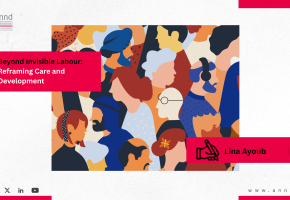
One or two states and the complexities of the Palestinian-Israeli conflict
One or two states and the complexities of the Palestinian-Israeli conflict - Izzat Abdel Hadi
This article discusses whether the two-State solution—"a sovereign and independent State of Palestine living side by side with the State of Israel within the 4th of June 1967 border"—is still viable.
If such a solution is impossible, would a single-State solution constitute a viable and realistic solution to the Palestinian-Israeli conflict? Or should the Palestinians build new approaches to resolve this conflict?
The general framework for the two-State solution, and consequently the Palestinian-Israeli conflict, has been agreed upon during onerous negotiations for more than 30 years between the Israeli and Palestinian sides.
The Madrid Peace Conference, held in 1992, constituted the international consensus on the two-State solution and its legal basis, in particular, resolution 242, which affirms that the Charter's implementation, entailing the establishment of a just and lasting peace in the Middle East, must include two principles:
1. The withdrawal of Israeli armed forces from the territories occupied during the latest conflict.
2. Ending all situations of war and related demands, in and the respect and recognition of the sovereignty, territorial integrity, and political independence of each State in the region, in addition to living in peace within secure and recognized borders without threats or use of force.
The resolution also emphasizes an equitable solution for the refugee issue.
Other terms of reference include successive Security Council and General Assembly resolutions, particularly Security Council Resolutions 476 (1978) on the illegality of Israel's annexation of East Jerusalem and Resolution 2334, which considered settlements to be a flagrant violation of international law under the Fourth Geneva Convention and other international legal principles. The Arab Peace Initiative also supported the two-State solution, reaffirming, as terms of reference, the Palestinian National Programme in 1988, guaranteeing Palestinians the right to self-determination in an independent and sovereign State based on the 1967 borders, with East Jerusalem as its capital and the right of return for refugees.
In this context, the two-State solution becomes empty if it is not accompanied by realistic solutions to many of its related core issues, particularly the status of Jerusalem, refugees, settlements, borders, water, and security. According to the 1993 Oslo Agreement, they are final solution issues that Palestinians and Israelis have failed to solve in 30 years of negotiations.
Palestinians made painful concessions during negotiations on all these issues. They accepted establishing their independent State on only 22% of historic Palestine and the principle exchange of land equal in size and quality to that of the Israelis in response to Israeli security needs. Other concessions included a flexible stance towards Jerusalem by accepting bi-state capitals or a unified bi-state capital and other proposals and accepting the Arab Initiative concerning Palestine Palestinian refugees, in particular, Article II of the Initiative stating that "an equitable and acceptable solution to the question of the Palestine refugees based on the United Nations Resolution 194" is necessary.
The Palestinian side also agreed to mutually agreed security arrangements, notably accepting an international peacekeeping force along the border with the Hashemite Kingdom of Jordan.
Unfortunately, Israel has rejected most of these solutions. It has continued to maintain its position on the above Final Solution issues, which are at odds with the principles of international law and international legitimacy, especially as it considers Jerusalem as the sole eternal capital of the State of Israel, insists on maintaining its security forces along the Jordan Valley, and refuses to regard 1967 as the basis for a two-state solution, and so forth.
Has the two-State solution failed and become impracticable?
Unfortunately, there are many complex obstacles and challenges to the two-state solution. As a result, the "resolution" has lost popularity and credibility among Palestinian and Israeli public opinion.
According to recent polls, less than 30% of Palestinians support the two-state solution, a drop from 70%. Even within Israeli society, the proportion falls below 40%. However, it is not sure whether public opinion in Palestine and Israel is flexible enough for this support to expand, leading Palestinians and Israelis to believe that positive changes are happening in the country, especially in the occupied Palestinian territories.
The illegal colonial settlement projects in the Occupied Palestinian Territory are the main obstacle to the two-State solution. Currently, there are over 850,000 settlers in occupied Palestine, who control over 60% of the occupied Palestinian territory. Moreover, the settlement project continues to expand, especially under the current far-right Israeli government. Therefore, Palestinians see that establishing an independent and sovereign Palestinian state is impossible since there is no more land to build. Many Palestinians also believe that Israel founded a system of apartheid with national control over others in the occupied Palestinian territories, including through applying two different laws in these territories, a civil law that applies to Israeli settlers and a military law that applies to Palestinians. This belief was further strengthened with the enactment of the "Nationalism" law, passed by the Knesset in 2018, which grants the right to self-determination only to Jews.
We must also not lose sight of the fact that the Palestinian division has, in turn, contributed to strengthening Palestinian public opinion's conviction of the difficulty of resolving the rift between the two states, using Israel as a pretext to evade its application. Moreover, the long delay in parliamentary and presidential elections due to Israel's obstacles to the democratic path in Palestine, especially its insistence on not holding elections in occupied Jerusalem, has contributed to a lack of confidence in the possibility of implementing the two-state solution.
Unfortunately, 30 years of Israeli-Palestinian negotiations have not resulted in an equitable and lasting solution to the Middle East conflict, reinforcing the belief that the two-state solution has become inapplicable.
Single State Solution
When the peace process reached a deadlock, and the possibility of a two-state solution faded, some Palestinians and research centers began to consider other solutions, such as one-state, federal, or confederal solutions with Israel, a confederal or federal with Jordan, and other solutions.
The "one-state solution" began to attract an increasing number of young Palestinians, who saw it as an ideal solution to get rid of Israel's colonial character (De Colonization) and to promote Palestinian refugees' right of return and the return of Palestinians' historical and political rights, especially with its demand for equality in one state.
Indeed, political concessions, coordination, and cooperation between Israelis and Palestinians to create a single state are immature and seem unacceptable to both sides and Israeli and Palestinian public opinion. This solution also lacks the support of the international community or regional actors, including Arab and Islamic governments. Recognizing the Palestinian state by more than 139 states worldwide within the 1967 borders and upgrading the status of the Palestine Liberation Organization (PLO) in the United Nations to a non-member observer also urged the Palestinian leadership to support the two-state solution.
Far-right tendencies in Israel are pushing forward the single-state solution, envisioning the expulsion of Palestinians from the country and the complete Israeli annexation of the West Bank. Furthermore, Gaza is not considered a part of the occupied Palestinian territories, thus removing 2 million Palestinians from the demographic equation.
Israel's settlement project continues, and the far-right control its decisions and pushes for a one-state solution. The situation could mean the emergence of an "Apartheid" state which discriminates against the Palestinian majority. However, the idea is unacceptable to Palestinians, and they will oppose creating a single democratic state with all their will. It is also absolutely unacceptable to the Israeli public, as it means leaving the Jewish state behind.
Continuing the status quo will raise a crucial question about "Israel's identity as a Jewish state and as an entity" on which Israel was founded.
The one-state solution lacks public, official, regional, and international legitimacy. It reinforces the legitimacy of the settlements and complicates the issue of ending the occupation and realizing the Palestinian people's rights to self-determination under international law.
Given these challenges regarding the two-state or one-state solution, the safest path is to focus on the legal Right Based Approach to conflict resolution. It entails using the instruments of international law and legitimacy to dismantle Israel's system of apartheid and realize the Palestinian right to self-determination, through one or two states, without linking it to peaceful negotiations or Israel's consent.
The dismantling of the Apartheid regime, which Israel is currently establishing in the occupied Palestinian territories, is not conditional on taking a definitive position on a single-state or a two-state solution. Therefore, choosing a side between the one or two states solution before dismantling the Israeli apartheid regime is nothing more than a mental exercise.
Izzat Abdel Hadi: Palestinian Ambassador, Head of the General Mission of Palestine in Australia, New Zealand, and the Pacific, and a founding Member of the Arab NGO Network for Development (AAND)
Recent publications

